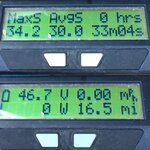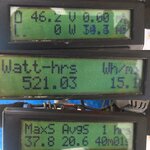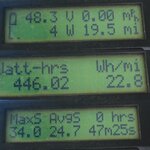In one of Cort's videos he comments that over 20 MPH the wind resistance takes an exponential toll on battery life - must be due to the fact that air drag increases with the cube of the speed. check out this graph.. https://goo.gl/PcsZKQ
I just got my first chance to ride the giant Quick E. I'm 6' 3" and weigh 215-220. On a flat road 1/4 -1/2 mile stretch, I was able to hit 22 max - in top gear and peddling hard - about the same speed I do during a mile or two sprint on my road bike / flat road. My main interest in an ebike is for riding in the white mountains on a combination of tarmac and dirt roads - hoping to flatten the hills a bit / extend my range. The bike I'm most interested in is the Giant tough road GX E+ - one of the few gravel ebikes I've seen. The main downside I see with this bike that it is limited to 20 MPH (I like speed), but given the above graph, my size, and my experience with the quick E perhaps the energy saving and wind resistance may make the 20 MPH limit a good thing - last thing I want is to run out of battery with a mile long 10%+ climb on a heavy bike. Should still go like hell on the downhills - maybe extra ebike weight is a positive when going downhill
I just got my first chance to ride the giant Quick E. I'm 6' 3" and weigh 215-220. On a flat road 1/4 -1/2 mile stretch, I was able to hit 22 max - in top gear and peddling hard - about the same speed I do during a mile or two sprint on my road bike / flat road. My main interest in an ebike is for riding in the white mountains on a combination of tarmac and dirt roads - hoping to flatten the hills a bit / extend my range. The bike I'm most interested in is the Giant tough road GX E+ - one of the few gravel ebikes I've seen. The main downside I see with this bike that it is limited to 20 MPH (I like speed), but given the above graph, my size, and my experience with the quick E perhaps the energy saving and wind resistance may make the 20 MPH limit a good thing - last thing I want is to run out of battery with a mile long 10%+ climb on a heavy bike. Should still go like hell on the downhills - maybe extra ebike weight is a positive when going downhill


